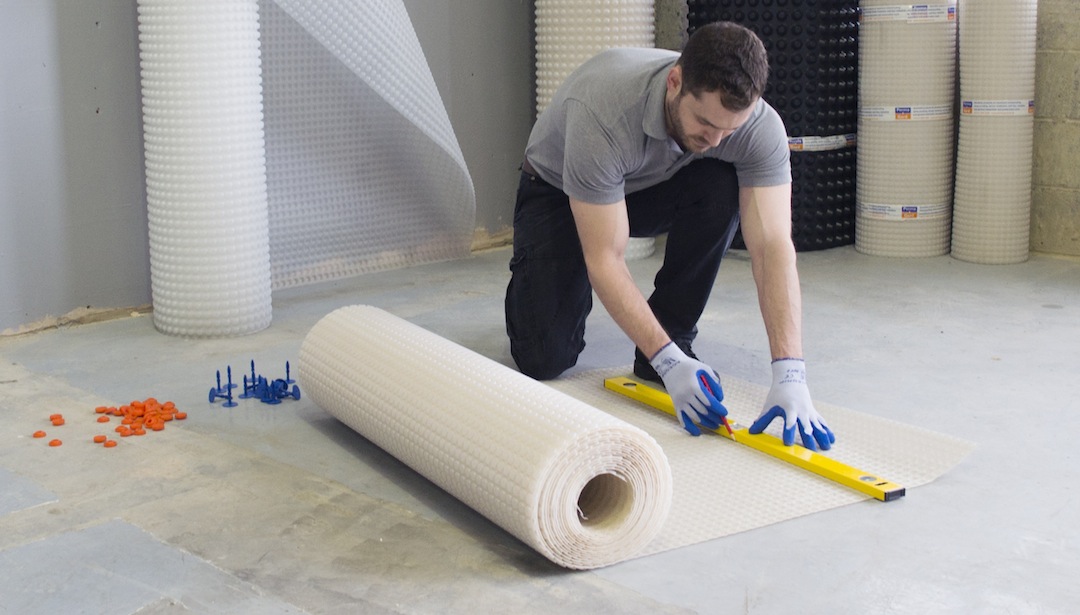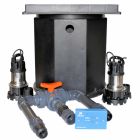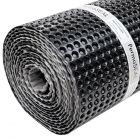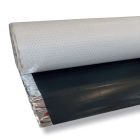Help & Advice Articles, Videos and How-to-Guides
Filter Articles

Which basement waterproofing system is the best?
Keeping your basement or cellar protected from water ingress is the first step in transforming your basement into a safe, habitable space. There are several options for waterproofing a basement, and it’s important to choose the right system to keep your property and possessions well protected.
Choosing the wrong waterproofing system for your basement - or not installing it correctly - can impact the level of protection your basement has. In this guide we’ll explore the different types of basement waterproofing systems, what you need to know and when you should consider each one.
Key considerations when choosing the best waterproofing system to match your needs
Water ingress into a basement can lead to serious damage and be costly to sort, so choosing the best waterproofing system for your basement is vital. There are a number of things to consider, starting with the condition of the basement and risk of water ingress.
As basements are below-ground structures, they’re susceptible to water penetration. If you’re living in a flood risk area or one with a high water table, your basement will require more thorough protection. Properties on a high water level sit on ground already saturated with groundwater that will increase over time as it rains or snows.
Other factors to consider are the construction of the building or local drainage systems. If either of these are built or installed incorrectly then the risk of water ingress increases.
It’s also important that your water basement system needs to comply with regulations. The BS8102 - the Code of Practice for Protection of Structures Against Water Ingress - provides guidance on the specification of various waterproofing systems and which to use depending on the basement. By selecting a type of waterproofing system that aligns with BS8102, you can be confident that your basement has the complete protection that you need.
Basement waterproofing types
There are three forms of waterproofing:
- Type A - Tanking/Barrier protection
- Type B - Structurally Integral Protection
- Type C - Cavity Drainage
We’ll break down each waterproofing system below, along with what you need to consider if installing each system.
It’s important to go with the water basement solution that best meets your requirements. When researching waterproofing systems, you should consult a professional to determine what exactly you need. We’ve published a guide listing questions to ask when speaking with a basement waterproofing company to help you make the right decision. You can find a list of contractors on the Property Care Association's website.
Our Permagard glossary explains many common damp and waterproofing terms.
What is basement tanking?
Also known as Type A barrier protection, tanking is a basement waterproofing method that can be applied externally, internally or both. When you tank a basement, you’re essentially creating an impenetrable barrier against water ingress. If installed correctly, it will prevent water entering your basement.
When talking about basement tanking, some people will be referring to waterproofing a basement in general, creating some confusion. However when we refer to tanking it means Type A waterproofing. There are two types of basement tanking - cementitious or with a tanking membrane.
Internal Tanking Systems
Internal tanking consists of applying a liquid waterproof coating or a cementitious slurry to walls and floor of a below-ground structure, forming a barrier against groundwater. It prevents water from entering your basement, unlike a cavity drain system, which still allows water to enter the structure but ensures it’s drained away from your property.
External Tanking System
External tanking involves sealing the building exterior to prevent water ingress into your basement. Usually applied during construction, it acts as a barrier between your basement and the area surrounding your home.
The products involved in external tanking include:
- A tanking membrane, such as PermaSEAL Self-Adhesive Tanking Membrane 15m²
- A geodrain membrane, such as PermaSEAL 8 Geodrain Membrane 40m²
- Liquid waterproofer with primer
- Sometimes a tanking slurry, such as MB2K+ - the most popular method.
Here at Permagard, we’ve written a number of guides on tanking, from ultimate guides to applying internal and external tanking:
- The complete guide to wall tanking & waterproofing
- What Is External Tanking?
- Tanking a Cellar – How to Guide
- Installing a self-adhesive tanking membrane system
If you decide to tank your basement, it’s important to ensure you understand the process and whether it is the right waterproofing method for your basement. Our guides cover all aspects of basement tanking, but we’ve listed the key considerations below.
Key considerations for tanking your basement
Here’s what you need to know when considering basement tanking:
- It’s only suitable for minimal levels of water ingress - if you’re living in an area with a high water table tanking alone may not provide enough protection.
- Your tanking products must be applied correctly - if your basement isn’t fully sealed, water may still seep into your home. Any defects will result in ingress.
- Tanking requires less maintenance than other waterproofing systems i.e. cavity drainage.
What is structurally integral waterproofing?
Structurally integral waterproofing, or a Type B waterproofing system, essentially creates a basement that’s waterproof by design. This system is installed during the building construction, using concrete that’s water resistant.
The construction of the property is key here. Poor installation can create weaknesses in the system, resulting in protection that’s not as reliable as it should be. Carefully following BS8102 guidance ensures that the waterproofing is effective and you can have confidence in your basement design.
What is a cavity drainage system?
A cavity drainage system safely channels water away from your basement. Rather than preventing water from entering your basement, any water ingress is channelled via a cavity drain membrane into drainage channels then into a sump and pump system. This then pumps the water away to an external drain or evacuation point.
This system is also known as Type C waterproofing and is ideal for properties with flood risk, high water tables or are likely to be subjected to higher hydrostatic pressure.
Here at Permagard, we’ve written a number of guides about cavity drainage systems:
- Stop Your Basement From Flooding With A Cavity Drainage System
- Type C Waterproofing Guide - How to Install A Cavity Drain System
We also have guides on installing sump pumps, a key component of any Type C waterproofing system, so you can be confident that your system is installed correctly:
Key considerations for installing cavity drain systems
Cavity drainage systems are generally considered to be one of the best ways to waterproof basement walls and floors. However, there are some things to keep in mind.
Firstly, it’s important to purchase all elements of a cavity drain system - this includes the sump pumps and drainage channels. Without the complete Type C system installed, it will not be able to effectively deal with water ingress. Just using the cavity membrane is not sufficient as the water has no means of being channelled and then pumped away from your home. These components may add up and be more expensive compared to other systems, such as tanking, but provide peace of mind.
As with all waterproofing methods for basements, installation must be done correctly to ensure complete protection - we’d recommend working with a waterproofing specialist for this.
You’ll also need to regularly maintain your cavity drainage system, making sure that it’s functioning correctly and there are no blockages. Normally this will be outsourced to a specialist pump service & maintenance company such as Packaged Pump Systems (PPS), who will ensure your basement pump station remains in tip-top condition throughout its entire life.
Cost of basement waterproofing
The cost of basement waterproofing can vary greatly. What you pay will depend on the state of the structure and the type of system you choose. As the cost of waterproofing your basement is very specific to the situation, it can be hard to predict a quote for what you need.
For this reason, it’s always best to consult with a waterproofing specialist, who’ll be able to provide a quote bespoke to your circumstances. If you’re feeling unsure about your situation, get in touch and we can advise next steps.
Is basement waterproofing worth it?
Basement waterproofing may seem like a time-consuming and costly process, but it’s worth investing in a system to ensure your home is properly protected.
With a reliable system in place, the contents of your basement is protected from damp, leaks and flood damage, leaving you free to make the most of the space. You’ll be able to transform your basement into a warm, habitable area or a good storage space without any risk to your processions while also adding value to your property.
How much value does a waterproofed basement add to your home?
If your basement is thoroughly waterproofed and made into habitable space, you can expect to see an increase in value to your home, same as converting a loft or building an extension. You’re creating extra living or storage space that can be valuable for families, hobbyists or people needing a little more room in their home.
Whether you’re converting your basement into a gym, home office, games room or simply another living area, installing the correct waterproofing system allows you to fully make the most of the space. Read more about converting your basement here.
Basement waterproofing systems from Permagard
Here at Permagard, we specialise in both Type A and Type C waterproofing systems, providing all you need to ensure your basement is protected from water ingress. Our high quality products are designed specifically to give you peace of mind.
If you’re unsure about which waterproofing system is right for you, then speak to our team today for expert advice.
Further reading:




